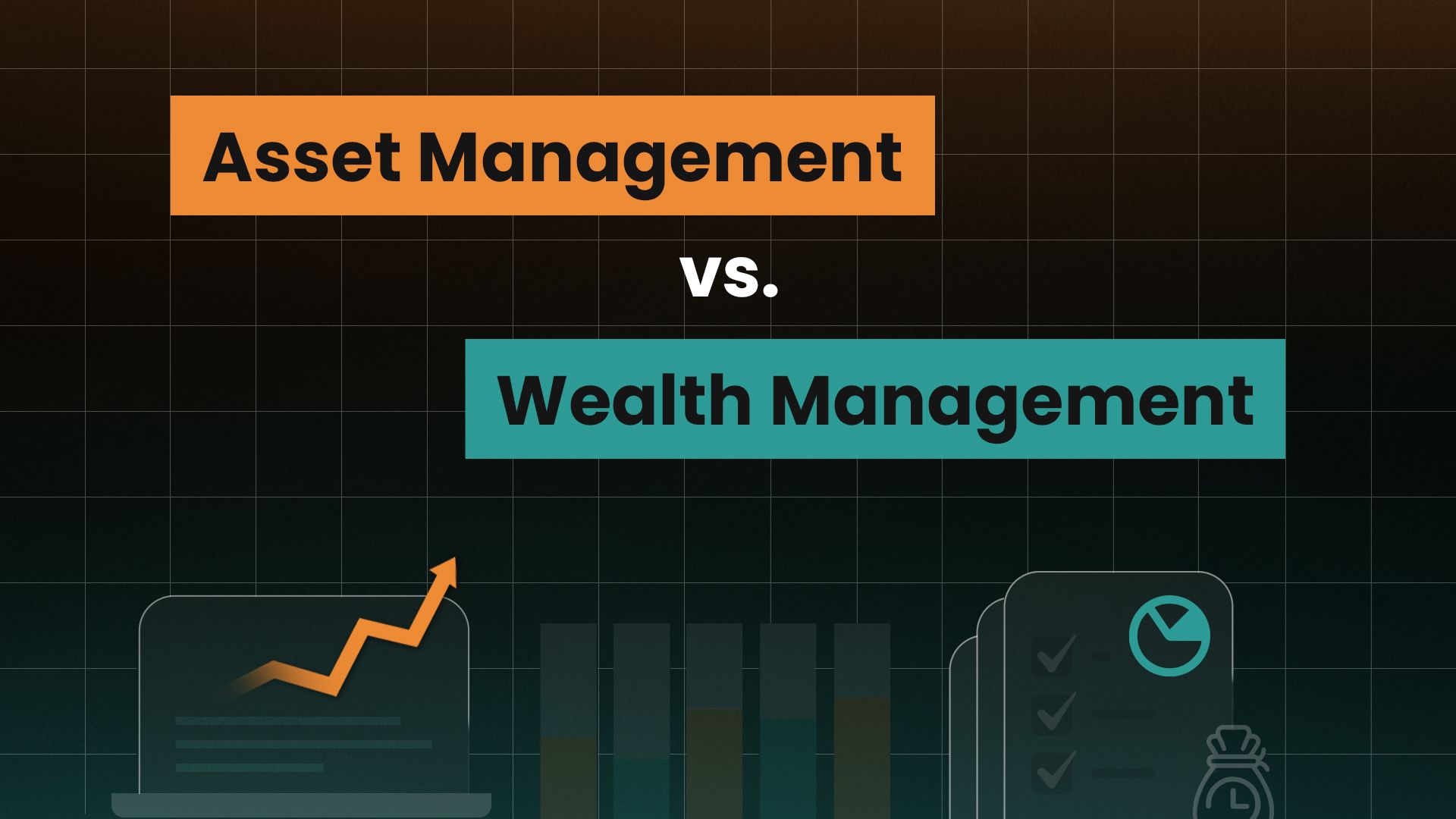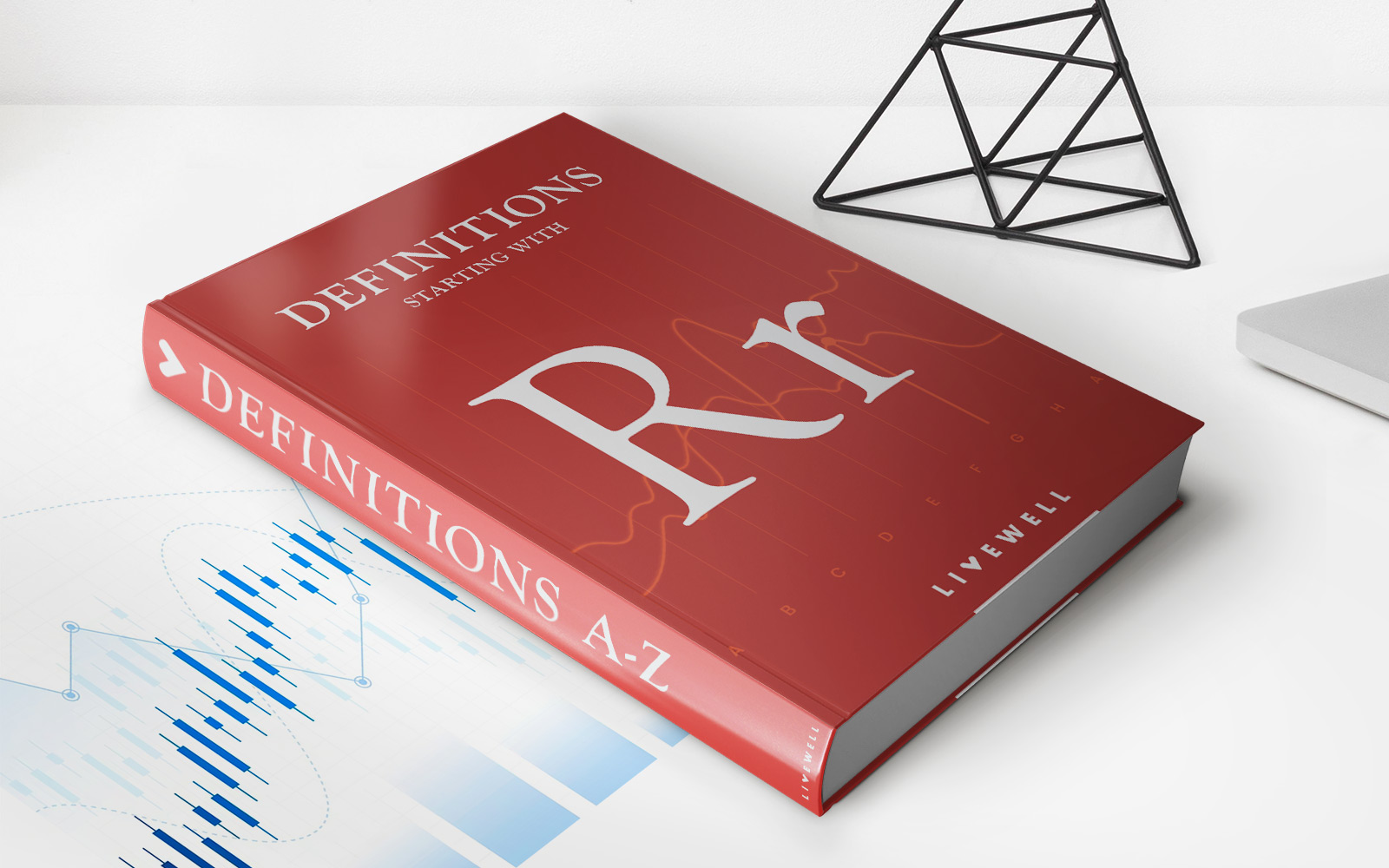Home>Finance>How To Determine Maximum Capital Structure Budget


Finance
How To Determine Maximum Capital Structure Budget
Published: December 24, 2023
Learn how to determine the optimal capital structure budget for your business in our comprehensive finance guide. Maximize your financial efficiency and success.
(Many of the links in this article redirect to a specific reviewed product. Your purchase of these products through affiliate links helps to generate commission for LiveWell, at no extra cost. Learn more)
Table of Contents
Introduction
Determining the maximum capital structure budget is a crucial aspect of financial planning for any business. Capital structure refers to the mix of debt and equity that a company uses to finance its operations and investments. It plays a significant role in shaping a company’s financial health, profitability, and risk profile. By identifying the optimal capital structure, a business can optimize its cost of capital, enhance its ability to access funding, and ultimately maximize shareholder value.
In this article, we will explore the concept of capital structure and delve into the importance of establishing a maximum capital structure budget. We will also outline key factors that businesses should consider when determining their optimal capital structure budget. Additionally, we will provide insights into the process of analyzing financial statements and develop an understanding of how capital structure planning unfolds. To bring these concepts to life, we will present a case study that exemplifies the practical application of determining the maximum capital structure budget.
Understanding capital structure is vital for businesses of all sizes, as it directly impacts their ability to secure funding, manage risk, and generate sustainable growth. By strategically managing their capital structure, companies can achieve a balance between debt and equity financing that aligns with their unique business needs and goals. This article aims to equip business owners, finance professionals, and entrepreneurs with the knowledge and tools necessary to make informed decisions regarding their capital structure budget.
So, whether you are a startup seeking financing options, an established business looking to optimize your capital structure, or a finance professional seeking to expand your knowledge, read on to discover how to determine your maximum capital structure budget effectively.
Understanding Capital Structure
Capital structure refers to the way a company finances its operations and investments by utilizing a combination of debt and equity. It represents the mix of long-term debt, short-term debt, and equity that a company uses to fund its activities. The capital structure decision is crucial because it determines the overall financial health and risk profile of a business.
Debt financing involves raising funds by borrowing money from lenders, such as banks or bondholders, and repaying it over time with interest. Equity financing, on the other hand, involves raising funds by issuing company shares to investors in exchange for ownership in the business. In simple terms, debt represents borrowed money that needs to be repaid, while equity represents ownership in the company.
The capital structure decision is not a one-size-fits-all approach and varies based on industry, company size, growth stage, and risk appetite. Companies need to find the right balance between debt and equity that aligns with their financial goals and risk tolerance.
There are several factors to consider when determining the optimal capital structure for a business. These include the cost of capital, financial flexibility, business risk, growth prospects, and investor expectations. Each of these factors has a significant impact on the financial stability and profitability of a company.
By utilizing debt, a company can benefit from the tax deductibility of interest expenses, which can reduce the overall cost of capital. However, excessive levels of debt can increase financial risk and result in higher interest obligations, potentially leading to financial distress. On the other hand, equity financing provides a cushion against financial risk but dilutes ownership and may require sharing profits with shareholders.
A company’s capital structure also affects its ability to access financing. Lenders and investors evaluate a company’s capital structure when considering whether to provide funding. A strong capital structure can increase a company’s creditworthiness and make it more attractive to lenders. A well-balanced capital structure can also provide a company with the financial flexibility to fund future growth and investment opportunities.
Overall, understanding capital structure is essential for businesses as it directly influences their financial stability, risk tolerance, and access to funding. It requires careful assessment of various factors and a thorough analysis of the business’s financial health and objectives. By determining the optimal capital structure, companies can position themselves for sustainable growth and profitability.
Importance of Determining Maximum Capital Structure Budget
Determining the maximum capital structure budget is a critical task that has significant implications for the financial well-being and long-term success of a business. The capital structure budget represents the ideal ratio of debt to equity that a company should maintain to achieve optimal financial performance. While every business has unique capital structure requirements, there are several key reasons why determining the maximum capital structure budget is essential.
One of the primary reasons is the impact it has on the cost of capital. Every source of financing, whether it is debt or equity, comes at a cost. Debt financing involves interest payments that a company must make to lenders, while equity financing means sharing ownership and profits with shareholders. By determining the maximum capital structure budget, a company can strike the right balance between debt and equity to minimize their cost of capital. This, in turn, leads to increased profitability and improved financial stability.
Another vital aspect is the risk management associated with capital structure. An optimal capital structure provides a business with the necessary financial stability to weather economic downturns or unexpected challenges. By determining the maximum capital structure budget, a company can ensure that it has an appropriate level of debt and equity to manage its risk effectively. Too much debt can impair a company’s ability to meet its financial obligations, while excessive equity dilutes ownership and reduces profitability. Finding the right balance is crucial for mitigating risk and protecting the long-term sustainability of the business.
Determining the maximum capital structure budget also impacts a company’s ability to access funding. Lenders and investors consider a company’s capital structure when evaluating its creditworthiness and investment potential. A well-structured and balanced capital structure enhances a company’s credibility and makes it more attractive to potential lenders and investors. It improves the company’s ability to secure favorable financing terms and opens doors for future growth opportunities.
Moreover, the maximum capital structure budget plays a crucial role in strategic financial planning. It aligns the company’s financial resources with its growth objectives and investment plans. By identifying the optimal capital structure, a company can allocate its resources efficiently, prioritize different funding options, and make informed decisions about debt repayment or equity issuance. This enables the business to make the most of its financial resources and capitalize on growth opportunities.
In summary, determining the maximum capital structure budget is vital for businesses as it influences the cost of capital, risk management, access to funding, and strategic financial planning. It enables companies to optimize their financial performance, enhance their risk profile, and position themselves for sustainable growth. By carefully analyzing their capital structure needs and finding the right balance between debt and equity, businesses can achieve long-term financial success and maximize shareholder value.
Factors to Consider in Determining Maximum Capital Structure Budget
Determining the maximum capital structure budget requires a careful assessment of various factors that impact a company’s financial health and strategic objectives. By considering these factors, businesses can identify the optimal mix of debt and equity financing that aligns with their unique circumstances. Here are some key factors to consider when determining the maximum capital structure budget:
- Business Risk: Assessing the level of risk associated with the business is crucial. A company operating in a stable industry with consistent cash flows may be able to sustain higher levels of debt. Conversely, a company operating in a volatile industry with uncertain cash flows may need to rely more on equity financing to manage risk.
- Growth Prospects: Consider the growth potential of the business. Companies with high growth prospects may require more capital to fund expansion plans. This may necessitate a higher proportion of equity financing to provide the flexibility needed for future investments.
- Industry Norms: Evaluate the typical capital structure ratios observed in the industry. Understanding industry benchmarks can help determine whether a company’s capital structure is in line with peers and identify potential areas for improvement or adjustment.
- Financial Flexibility: Consider the company’s need for financial flexibility. A business with limited access to credit or a high likelihood of needing to make substantial investments or acquisitions may require a lower level of debt to maintain flexibility in managing its cash flow.
- Cost of Capital: Analyze the cost associated with each source of capital. Debt financing generally carries interest expenses, while equity financing involves sharing profits with shareholders. Determining the optimal mix of debt and equity involves weighing the cost of interest payments against the dilution of ownership and sharing of profits.
- Investor Expectations: Take into account the expectations of existing and potential investors. Some investors may prefer a company with a lower level of debt, while others may be more comfortable with higher leverage ratios. Understanding investor preferences can influence the choice between debt and equity financing.
- Financial Ratios: Analyze financial ratios such as debt-to-equity ratio, interest coverage ratio, and return on equity. These ratios provide insights into the company’s leverage, ability to meet interest payments, and profitability. Assessing these ratios can help determine if the existing capital structure is well-suited or if adjustments need to be made.
By considering these factors, businesses can make informed decisions about their capital structure. It is important to note that the optimal capital structure may evolve over time as business conditions change. Regular monitoring and reassessment of the capital structure in light of changing circumstances ensure that the business remains well-positioned for long-term success.
Analyzing Financial Statements
Analyzing financial statements is a crucial step in determining the maximum capital structure budget for a company. Financial statements, including the balance sheet, income statement, and cash flow statement, provide valuable information about a company’s financial health, performance, and cash flow generation. By examining these statements, businesses can gain insights into their current capital structure and make informed decisions regarding the optimal mix of debt and equity financing.
The balance sheet provides a snapshot of a company’s financial position at a specific point in time. It includes information on the company’s assets, liabilities, and shareholders’ equity. Analyzing the balance sheet allows businesses to assess their current debt levels and equity base. By comparing the proportion of debt to equity, businesses can gauge their leverage and determine if their capital structure aligns with their risk tolerance and financial objectives.
The income statement, also known as the profit and loss statement, provides an overview of a company’s revenues, expenses, and net income over a specified period. Analyzing the income statement allows businesses to evaluate their profitability and assess the impact of interest expenses on their overall financial performance. By understanding the relationship between net income and interest payments, companies can make informed decisions about the optimal level of debt in their capital structure budget.
The cash flow statement provides insights into a company’s cash inflows and outflows from operating activities, investing activities, and financing activities. Analyzing the cash flow statement enables businesses to assess their ability to generate cash, meet debt obligations, and fund future growth initiatives. It provides valuable information about the business’s liquidity and cash flow stability, which are essential considerations when determining the maximum capital structure budget.
In addition to the financial statements, financial ratios play a crucial role in determining the optimal capital structure. Ratios such as debt-to-equity ratio, interest coverage ratio, and return on equity provide insights into a company’s leverage, ability to meet interest payments, and profitability. Analyzing these ratios helps businesses assess their existing capital structure and identify areas for improvement or adjustment.
When analyzing financial statements, it is essential to compare the company’s performance and financial position with industry benchmarks and competitors. This enables businesses to assess their relative financial health and identify potential areas for improvement in their capital structure. By identifying industry norms and best practices, companies can align their capital structure decisions with the broader market and enhance their competitiveness.
In summary, analyzing financial statements is a critical step in determining the maximum capital structure budget for a company. Financial statements provide valuable insights into a company’s financial health, performance, and cash flow generation. By examining the balance sheet, income statement, cash flow statement, and financial ratios, businesses can assess their current capital structure, make informed decisions about their optimal mix of debt and equity financing, and position themselves for long-term financial success.
Capital Structure Planning Process
The capital structure planning process involves determining the optimal mix of debt and equity financing to achieve a company’s financial goals and optimize its capital structure. It is a strategic decision-making process that requires careful analysis and evaluation. Here is an overview of the capital structure planning process:
- Evaluate Business Objectives: Understand the company’s short-term and long-term financial goals. Consider factors such as growth projections, profitability targets, and risk tolerance. These objectives will guide the capital structure planning process.
- Analyze Financial Statements: Conduct a thorough analysis of the company’s financial statements, including the balance sheet, income statement, and cash flow statement. Assess the current capital structure and evaluate the company’s debt levels, profitability, and cash flow generation. Identify any areas of concern or opportunity.
- Assess Industry and Market Conditions: Consider the industry and market conditions in which the company operates. Analyze industry benchmarks and trends in capital structure to gain insights into market norms and best practices. Evaluate how the company’s current capital structure compares to competitors.
- Consider Cost of Capital: Evaluate the cost associated with each source of capital. Assess the interest rates for debt financing and the expected returns for equity financing. Determine the impact of different capital structure scenarios on the company’s overall cost of capital.
- Weigh Risk and Return Trade-offs: Balancing risk and return is a crucial aspect of capital structure planning. Assess the company’s risk tolerance and evaluate the impact of different capital structure scenarios on risk levels. Consider factors such as interest rate risk, financial flexibility, and investor expectations.
- Model Different Scenarios: Develop financial models to simulate different capital structure scenarios. Consider the impact of various debt-to-equity ratios on financial metrics such as interest coverage, return on equity, and earnings per share. Analyze how different scenarios align with the company’s financial goals and risk profile.
- Optimize Capital Structure: Based on the analysis and modeling, determine the optimal capital structure that aligns with the company’s objectives and risk tolerance. This involves identifying the ideal mix of debt and equity financing to maximize shareholder value while maintaining financial stability.
- Implement and Monitor: Once the capital structure plan is developed, implement the recommended changes. Communicate the plan to relevant stakeholders, including lenders, investors, and internal teams. Continuously monitor the capital structure and make adjustments as necessary to adapt to changing market conditions or business needs.
The capital structure planning process is iterative and dynamic. It requires regular review and adjustment as business conditions change. It is important to regularly assess the capital structure to ensure that it remains aligned with the company’s financial objectives and risk profile.
By following a structured capital structure planning process, businesses can make informed decisions about their optimal capital structure. This enables them to optimize their cost of capital, manage risk effectively, and position themselves for sustainable growth and profitability.
Case Study: Determining Maximum Capital Structure Budget
To illustrate the process of determining the maximum capital structure budget, let’s consider the case of a technology startup, ABC Tech Solutions. The company is growing rapidly and is in need of funding to support its expansion plans. The management team is tasked with determining the optimal mix of debt and equity financing to achieve their financial objectives.
The first step in the process is to evaluate the company’s financial statements. The balance sheet reveals that ABC Tech Solutions has minimal debt and a healthy equity base. The income statement shows positive net income, indicating profitability. The cash flow statement indicates strong cash flow generation from operating activities.
Next, the management team analyzes industry benchmarks and norms to gain insights into capital structure practices in the technology sector. They discover that technology startups often rely heavily on equity financing to fund their growth due to the high uncertainty and risk associated with the industry.
Considering the company’s growth prospects and risk appetite, the team decides to model different capital structure scenarios. They create financial models that simulate different debt-to-equity ratios and assess the impact on key financial metrics. The models reveal that an increase in debt financing would reduce the company’s cost of capital and improve its profitability. However, it also increases financial risk and places a burden on interest payments.
The team weighs the trade-off between risk and return and decides on a balanced approach. They determine that a capital structure with a higher proportion of equity financing would provide financial flexibility and mitigate risk, while still allowing them to tap into the tax benefits associated with debt financing.
Based on their analysis, the management team determines the maximum capital structure budget for ABC Tech Solutions. The budget includes a combination of external equity financing, such as venture capital funding, and internally generated funds. This approach ensures that the company has the necessary financial resources to support its growth plans while maintaining a strong financial position.
Once the maximum capital structure budget is determined, the management team communicates the plan to investors and lenders. They provide a comprehensive explanation of the rationale behind their capital structure decision, highlighting the company’s growth prospects, risk management measures, and alignment with industry norms.
Over time, ABC Tech Solutions monitors its capital structure and adjusts it as needed. As the company continues to grow and generate profits, it gradually reduces its reliance on external equity financing and explores opportunities for debt financing to further optimize its capital structure.
This case study demonstrates the importance of a systematic approach to determining the maximum capital structure budget. By conducting a thorough analysis, considering industry benchmarks, and balancing risk and return, businesses can make informed decisions about their capital structure and position themselves for sustainable growth and success.
Conclusion
Determining the maximum capital structure budget is a critical task for businesses of all sizes and industries. By finding the optimal mix of debt and equity financing, companies can optimize their cost of capital, manage risk effectively, and position themselves for sustainable growth and profitability.
Understanding capital structure and the factors that influence it is essential for making informed decisions. By evaluating business objectives, analyzing financial statements, considering industry norms, assessing the cost of capital, and weighing risk and return trade-offs, businesses can determine their optimal capital structure.
Analyzing financial statements provides valuable insights into a company’s financial health, performance, and cash flow generation. By examining the balance sheet, income statement, cash flow statement, and financial ratios, businesses can assess their current capital structure, identify areas for improvement, and make informed decisions about their optimal mix of debt and equity financing.
The capital structure planning process involves evaluating business objectives, analyzing financial statements, assessing industry and market conditions, considering the cost of capital, weighing risk and return trade-offs, modeling different scenarios, optimizing the capital structure, implementing the plan, and monitoring progress.
Through a case study, we saw how a technology startup determined its maximum capital structure budget by conducting a thorough analysis, considering industry benchmarks, and balancing risk and return. The company chose a balanced approach that allowed for financial flexibility while tapping into tax benefits associated with debt financing.
In conclusion, determining the maximum capital structure budget is crucial for businesses to achieve their financial goals, manage risk, and secure funding for growth and expansion. By carefully assessing financial statements, evaluating market conditions, and modeling various scenarios, companies can optimize their capital structure and position themselves for long-term success in today’s dynamic business environment.














